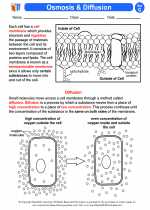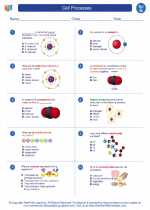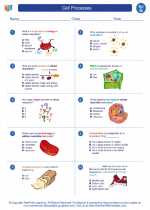Biological Classification System
The biological classification system, also known as taxonomy, is a hierarchical system used to categorize and organize living organisms based on their shared characteristics. This system was developed by Carl Linnaeus in the 18th century and has since been used to classify and identify the diversity of life on Earth.
Levels of Classification
The biological classification system consists of seven main levels of classification, each with its own unique characteristics. These levels, from broadest to most specific, are:
- Kingdom: The highest level of classification, organisms are grouped into one of five kingdoms: Monera, Protista, Fungi, Plantae, and Animalia.
- Phylum: Organisms within a kingdom are further divided into phyla based on shared characteristics.
- Class: Phyla are then divided into classes based on similar features and structures.
- Order: Classes are further divided into orders, based on additional shared characteristics.
- Family: Orders are then divided into families, based on shared genetic and structural features.
- Genus: Families are further divided into genera, grouping together closely related organisms.
- Species: The most specific level of classification, consisting of organisms that are capable of interbreeding and producing fertile offspring.
Importance of Classification
The biological classification system is essential for several reasons:
- Organizing Diversity: It helps to organize the vast diversity of life on Earth into manageable groups.
- Identification: It provides a universal system for identifying and naming organisms, which is crucial for communication among scientists and researchers.
- Understanding Relationships: It helps to understand the evolutionary relationships between different organisms and their shared ancestry.
- Conservation: It aids in the conservation of species by providing a framework for understanding the distribution and diversity of organisms.
Classification Example
For example, a common housecat can be classified as follows:
- Kingdom: Animalia
- Phylum: Chordata
- Class: Mammalia
- Order: Carnivora
- Family: Felidae
- Genus: Felis
- Species: Felis catus
By following this classification, scientists and researchers can easily communicate and understand the specific characteristics and relationships of the housecat within the broader spectrum of life.
Study Guide
To study the biological classification system, it is essential to understand the key concepts and characteristics of each level of classification. Here are some study tips:
- Memorize the hierarchy of classification levels: Kingdom, Phylum, Class, Order, Family, Genus, and Species.
- Understand the characteristics and examples of each kingdom: Monera, Protista, Fungi, Plantae, and Animalia.
- Practice classifying common organisms into their respective levels of classification.
- Explore the evolutionary relationships between different organisms and the basis for their classification.
- Review the importance and practical applications of the biological classification system.
By mastering these key points, you will gain a comprehensive understanding of the biological classification system and its significance in the study of life sciences.
[Biological Classification System] Related Worksheets and Study Guides:
.◂Science Worksheets and Study Guides Seventh Grade. Cell Processes

 Activity Lesson
Activity Lesson
 Worksheet/Answer key
Worksheet/Answer key
 Worksheet/Answer key
Worksheet/Answer key
 Worksheet/Answer key
Worksheet/Answer key
 Worksheet/Answer key
Worksheet/Answer key
 Vocabulary/Answer key
Vocabulary/Answer key
 Vocabulary/Answer key
Vocabulary/Answer key
 Vocabulary/Answer key
Vocabulary/Answer key
 Vocabulary/Answer key
Vocabulary/Answer key
 Vocabulary/Answer key
Vocabulary/Answer key
 Vocabulary/Answer key
Vocabulary/Answer key
 Vocabulary/Answer key
Vocabulary/Answer key
